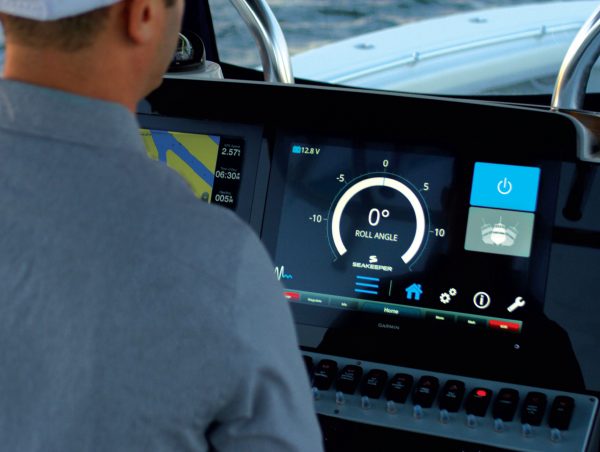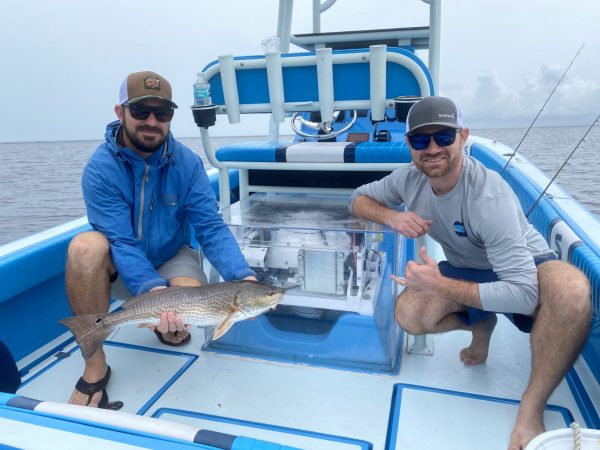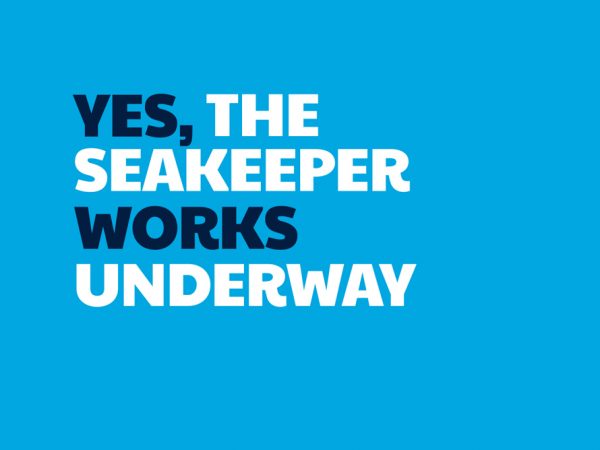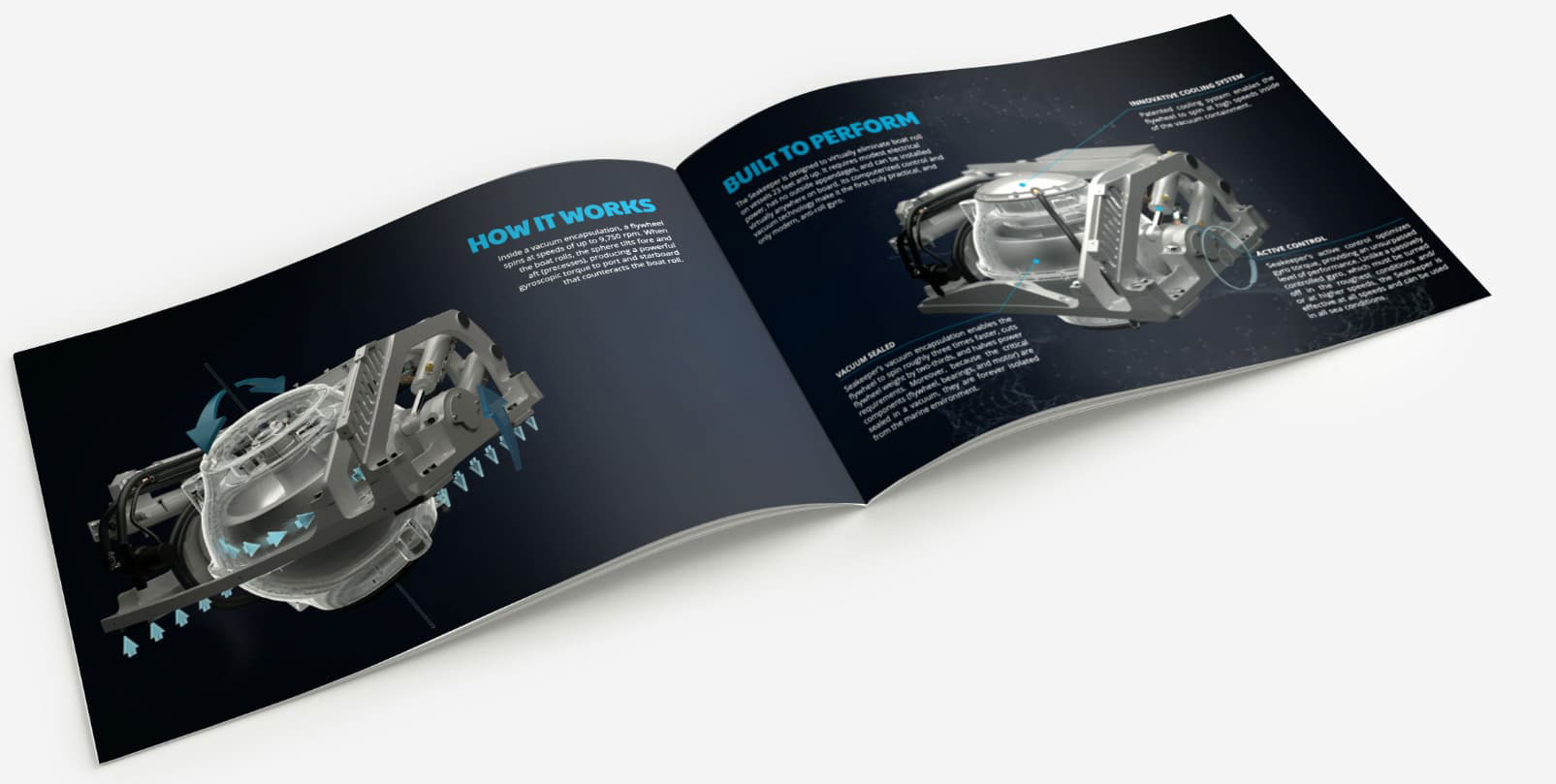Does Seakeeper Improve Sonar Performance?
SEAKEEPER, SONAR, AND THE IMPORTANCE OF STABILITY
It’s the last morning of the fishing tournament, and the sun is rising over the horizon as you pull out of the marina. With record prize money on the line, stakes are high, and this is your last chance to reel in the big one. The pressure is on the sonar now because you’re relying on it to lead you to that trophy fish. But what if you could improve your sonar? Clean up its image and keep it trained on your target? Well, say hello to your big win because, with Seakeeper, you can do just that.
HOW DOES SONAR WORK?
Sonar is an incredible technology that allows us to “see” beneath the waves. It might sound modern, but sonar technology has been around for more than 100 years. It works by sending out sound waves from an underwater transducer and detecting the reflected echoes. The time it takes for the sound waves to return measures the object’s distance. From that, you get an image of what’s around you. Neat, right?
OMNIDIRECTIONAL SONAR
Traditional sonar has limitations because it scans sections of the water in a rotating pattern. It can be slow to refresh, showing what you’ve already passed over. Enter the new(er) kid on the block – omnidirectional sonar. Invented in the early 1970s, omnidirectional sonars scan 360 degrees and can refresh data up to five times per second. They essentially give you a live feed of everything from around your hull to more than 5,000 feet away, allowing you to track a fish in real time.
Omnidirectional sonars have been a staple in the commercial fishing industry, but they’ve become increasingly popular in tournament fishing over the last few years. With millions of dollars on the line, they provide a huge competitive advantage. So big, in fact, that some tournaments have rules that omnidirectional sonars can only be used after official fishing hours start. Other tournaments even separate added-entry categories based on whether or not a boat uses an omnidirectional sonar.
IS BOAT STABILITY IMPORTANT FOR SONAR PERFORMANCE?
Omnidirectional sonars can detect objects nearly a mile away from your hull. But the image you see on your sonar display is only as accurate as the readings received from the underwater transducer. If your hull is rolling in the waves, so is the transducer, and it won’t be able to send and receive accurate signals. That can cause a blurring effect on the sonar display picture.
How do you remove the blur? With Seakeeper gyro stabilization. Eliminating up to 95% of boat roll, Seakeeper keeps your hull (and therefore transducer) steady, so you’re always scanning a consistent field of view. Don’t just take it from us! We talked with Matt Wood, Furuno USA‘s National Sales Manager, and he confirmed the beneficial relationship, saying, “We know from several ride-alongs during tournaments and ‘war stories’ that the Seakeeper really helps keep our sonar trained on fish and fish schools when the ocean is rolling.”
Think of a sonar like a camera lens. Seakeeper isn’t changing the resolution of your image, but it does remove interference, leaving you with the crispest picture possible. Matt Wood explained it well when he said, “By stabilizing the vessel, the Seakeeper has an effect like a multi-axis gimbal that you might see in Hollywood film production. Electronic beam stabilizers for sonar are good, but they usually cannot work in three axis at the same time. By reducing rolling, the Seakeeper enables our CSH8LMK2 to stay on target, whether we are tracking schools of bait fish or individual trophy fish.”
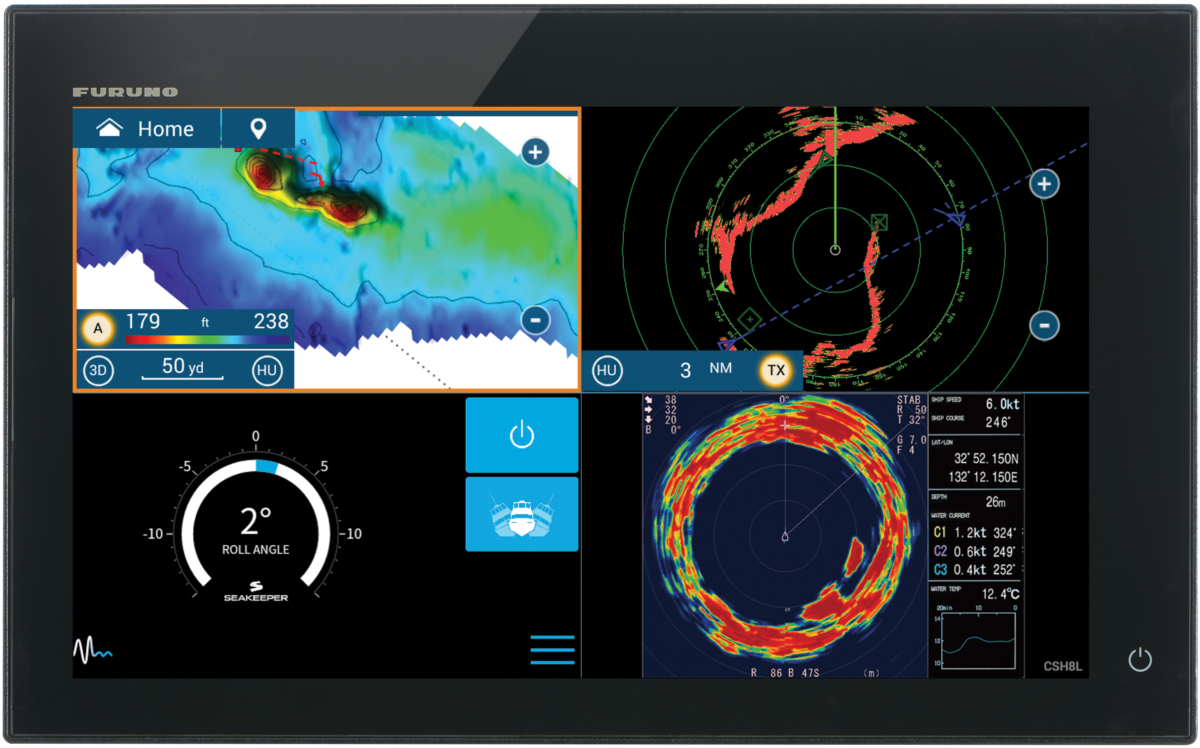
According to Matt Wood, “The combination of Seakeeper gyro and Furuno sonar is a real win-win for fishermen who expect top performance!”
Keeping your boat stable also minimizes bubbles from getting trapped under the hull. That might not sound important, but bubbles make great sonar reflectors and can interrupt the transducer’s sound waves. They can disperse the sound in all different directions or create an echo return at the bubble’s location – not where a fish is. Ultimately, Seakeeper creates the best operating environment possible for your sonar, so you aren’t left questioning what you see on your display.
SEAKEEPER ON UNCREWED VESSELS
Yep, Seakeepers have been installed on vessels with no crew. Sonar-equipped uncrewed surface vessels (USVs) are often used to gather information for developing nautical charts and mapping the seafloor to locate shipwrecks or other underwater hazards. And having a clear sonar image is the only way to collect accurate data.
Take the Ares Shipyard ULAQ SİDA, for example. This 11m armed uncrewed surface vessel (AUSV) is stabilized with a Seakeeper 3. It spends time gathering reconnaissance, surveillance, intelligence, and acting defensively with its remote-controlled weapon system. The ULAQ AUSV is equipped with more than just sonar that relies on a stable platform for mission success.
STABILIZE YOUR SONAR
Whether you’re competing for the prize purse or mapping the seafloor, Seakeeper allows your sonar to display a crystal-clear view. Contact your local Dealer to start your stabilization journey and improve your sonar’s performance.
